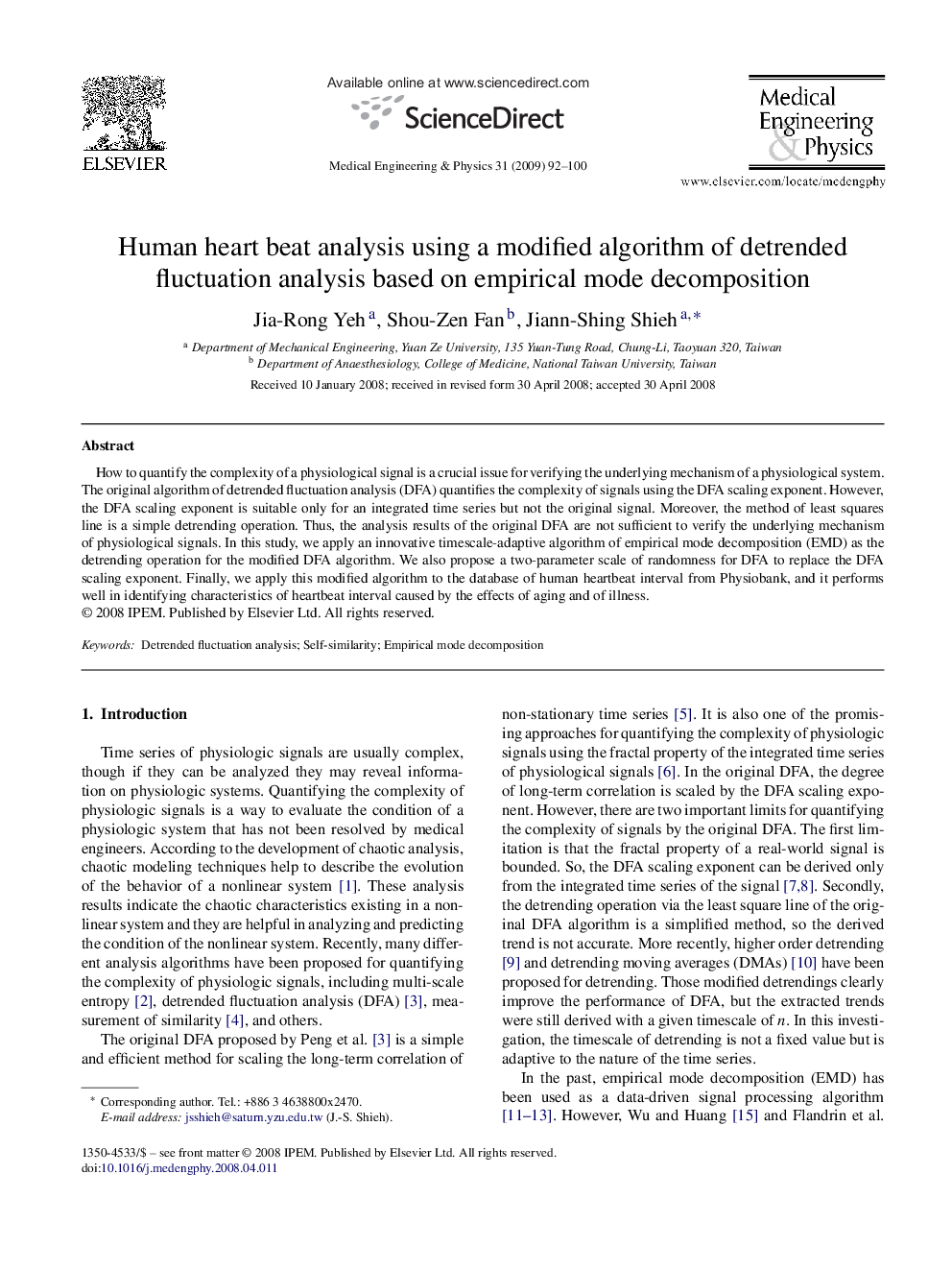| Article ID | Journal | Published Year | Pages | File Type |
|---|---|---|---|---|
| 876851 | Medical Engineering & Physics | 2009 | 9 Pages |
How to quantify the complexity of a physiological signal is a crucial issue for verifying the underlying mechanism of a physiological system. The original algorithm of detrended fluctuation analysis (DFA) quantifies the complexity of signals using the DFA scaling exponent. However, the DFA scaling exponent is suitable only for an integrated time series but not the original signal. Moreover, the method of least squares line is a simple detrending operation. Thus, the analysis results of the original DFA are not sufficient to verify the underlying mechanism of physiological signals. In this study, we apply an innovative timescale-adaptive algorithm of empirical mode decomposition (EMD) as the detrending operation for the modified DFA algorithm. We also propose a two-parameter scale of randomness for DFA to replace the DFA scaling exponent. Finally, we apply this modified algorithm to the database of human heartbeat interval from Physiobank, and it performs well in identifying characteristics of heartbeat interval caused by the effects of aging and of illness.
